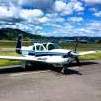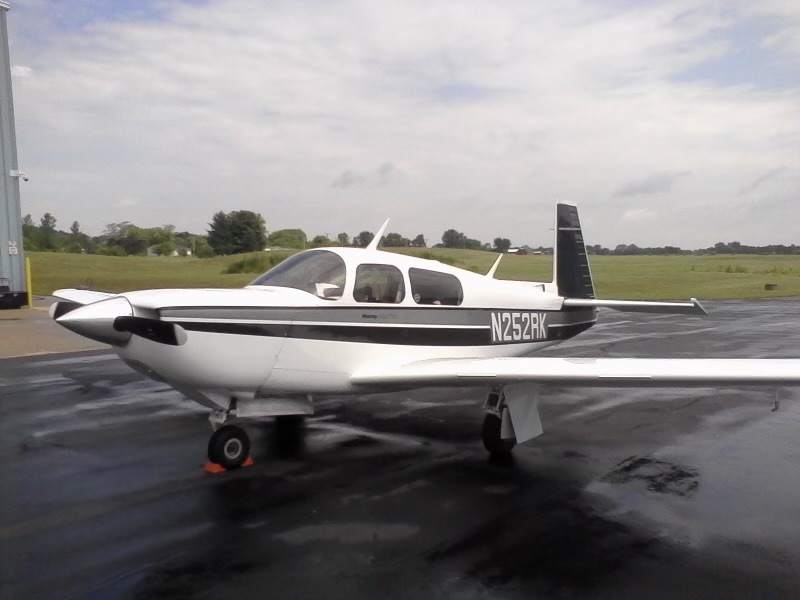-
Posts
5,610 -
Joined
-
Last visited
-
Days Won
28
Content Type
Profiles
Forums
Blogs
Gallery
Downloads
Media Demo
Events
Everything posted by Ragsf15e
-

Need advice / sharing my concerns with someone
Ragsf15e replied to redbaron1982's topic in General Mooney Talk
He’s always been pretty reasonable with advice and good with his maintenance. They are antique aircraft, so keep that in mind. Each is a little different. Don has maintained a solid reputation for a long time though. If there was one place to have your aircraft, that’s it. -

cowl flaps won't stay closed in flight
Ragsf15e replied to M Terry's topic in Vintage Mooneys (pre-J models)
There is a measurement in the maintenance manual. Maybe for a newer year than yours? -

cowl flaps won't stay closed in flight
Ragsf15e replied to M Terry's topic in Vintage Mooneys (pre-J models)
Maybe the ones with the “tiny balls”weren’t so bad after all?! -
Possibly it does underperform…it’s slower than a TBM. However it only has 1 engine compared to 2 on other light jets and it has the chute which nothing else has in that class. Nevermind that light jets shouldn’t really need a chute…
-
Be real care With the ram air “rubber” duct when messing with the bottom cowl. Those are not available if you put a hole in it which is surprisingly easy. They could be a grounding item depending on the creativity of your IA.
-
I wonder if there’s a lot of difference in the “bulbous” part of the nose gear door. I’ve disconnected mine and it’s still in the way. I need to disconnect it and push it closed, but it hits the nose gear before I have room for a normal screwdriver. I use one of these, but it’s still a little work… and reconnecting the nose gear door is a PIA for such a little part. On jacks with the gear up is like heaven!
-
Look back through your logs. We had a thread about a year ago where someone had a leak at the fuel selector drain and took it to DMax. Apparently the drain parts aren’t available, so Dmax was able to use a standard wing drain as you are describing. Maybe yours is modified like that. Should be in the airframe log. Its also a good idea to learn about your airplane by exploring… take that panel off and have a look. Just be careful with the screws along the nose gear door as they are hard to get out without scratching the nose gear.
-
I also fly a FIKI airplane in the northwest. There are a couple of things to consider depending on your aircraft capabilities that I use to help pick cruise altitudes and “outs” for a descent… I find the temp vs altitude charts very informative. According to the ifr flying handbook, it’s possible to get ice above 0 C, but I have found that very unlikely. I usually use the freezing level as my lower bound for ice. I want to know if I can decend below freezing but above the MEA. In the Seattle area you can sometimes also get above possible ice by getting to an altitude below -20 C. If you have a turbo, try to cruise higher than this when possible. especially if you think you’ll be in the clouds. Ice is very unlikely this cold. Even in the Seattle class B, I’ve found ATC very accommodating when I’ve told them I wanted a continuous climb or decent through ice vs a step down/up (like on the Skyko arrival when they have you decend to 11,000’ only halfway across the Cascades). I’ve told them I want a later decent for ice and they worked it out. If in doubt, “unable” also works. I have found ice from 0 to -20, but roughly -5 to -15 C in those wet clouds is really a place to avoid.
-
I don’t have any help solving, but I’d say most of us with an io-360 see ~75psi in cruise. The higher pressures with cold oil are normal, but not your cruise pressure. The only time I see that low (55psi) is after landing - hot oil and 1000rpm. This sounds like more than just what type oil you’re using…
-
I thought there’s no corrosion below freezing? https://www.researchgate.net/profile/Yu-Panchenko/publication/227242816_Atmospheric_corrosion_of_metals_in_regions_of_cold_and_extremely_cold_climate_a_review/links/543d07d70cf2c432f74236b0/Atmospheric-corrosion-of-metals-in-regions-of-cold-and-extremely-cold-climate-a-review.pdf?origin=publication_detail ok, maybe not zero. But much reduced if it’s really cold.
-
Worth checking around because the welding places generally use the term “overhaul” and “rebuilt” interchangeably. Either way, it’s essentially new.
-
The solenoid is circled on the right. Starter ring gear circled on the left (pretty close to the starter). I would guess @A64Pilot is correct.
-

1966 M20E RPM Restriction Question
Ragsf15e replied to Cessna738's topic in Vintage Mooneys (pre-J models)
I think that’s exactly what it says in the STC for the Mcauley props. -

1966 M20E RPM Restriction Question
Ragsf15e replied to Cessna738's topic in Vintage Mooneys (pre-J models)
I’m not sure exactly how the stc vs tcds plays out, but there are other props now approved with some (slightly) different restriction ranges. Eg - Mcauley props which aren’t on that tcds. One other interesting thing is that my edm930 has the non continuous range marked in yellow, not red as indicated here. But then I have a different prop… To the OP, most people find there are some times they must operate in that regime for short periods of time (usually on final or instrument approaches). But we mostly agree we should not cruise there or stay in that regime longer than necessary. There’s your free internet opinion. -
Someone smarter maybe has a better idea, but I’d be suspect of the starter solenoid. When you turn, that solenoid should immediately connect the fat cable going to the starter with the battery and spin the prop. On second thought, maybe that part is working and the starter isn’t immediately engaging teeth in the gear? It would be useful to (very carefully!) stand near the pilot side of the engine with the cowl off and turn it over. If the weird noise is coming from the front (starter area) or the firewall (solenoid) that might narrow it down.
-
Well the donuts could be involved then. I’ve heard some had an airspeed switch too? Do you know if you have both? Doesnt help you now, but Mooney has a service letter and kit that installs a bypass switch which allows you to get the gear up if the squat switch fails. @Marauder has good pictures. Sometimes it happens when it’s really cold.
-
Step one - does your airplane have a squat switch? Most don’t, only a few years. It’s in left gear well if you do. You can pull the gear warning circuit breaker to shut off the warning and let your brain think if the problem reoccurs. That warning is designed to be distracting and it works!
-
My opinion, so take it for that… navigation is the least of your worries if you have a major failure. The key is being sure you’ll have an ADI. If you have an ADI, then follow the comm out rules for lateral and vertical with your phone, ipad, etc and you’ll be fine. I can navigate very close to 430w capability with my phone. Obviously no glide slope, but I have FF on 2 phones and an iPad. That’s 3 x gps. The one thing I would like in addition to an ADI is a radio. With a radio you get nav (no gryo vectors), terrain and traffic avoidance and other help from atc. Maybe even an ASR approach. I have a portable, but your 430 would be nice for comm. The extra navigation it provides? Meh. Not necessary.
-
My g5 batteries are ~4 years old and are still fine on both ADI and HSI. I have tried them both off ships power for over 3 hours and they still had ~20% remaining.
-
Jeez, I think @ilovecornfields has a pretty well thought out and common sense approach to airborne decision making.
-

Emergency Exit- Vintage Mooneys
Ragsf15e replied to Andy95W's topic in Vintage Mooneys (pre-J models)
Ok, so not 250, 6’, but there’s a video around here. Maybe @201er? Someone did it and it was surprisingly fast and easy. I do think it was a smaller person… -
Kinda what the other guys are saying, but typically you want to start new instrument pilots under the hood with things like straight and level, turns to a heading, constant rate/speed climbs, timed turns, and the dreaded “vertical S”. This first part is where you internalize the different power settings, pitch, and configuration to use for different phases. Then you move to intercepts, tracking courses, holding, etc. Introducing navigation systems while maintaining the perfect speed, heading, altitude from the first part. On early flights you might just see/get one approach on the way back. Halfway through your IR, you can really start learning from multiple approaches. If you keep just doing approaches, You’re probably skipping some skills you either think you have or don’t know you’re missing. That being said, we weren’t there. Do whatever you and your CFII agreed on. However, switching airplanes isn’t going to make it easier. With respect to your 400 hours and your previous instrument work, Learning how to fly instruments is about starting back at the basics, only doing it much more precisely and without looking outside. There are some free instrument syllabus online that will lead you through each flight/stage. I’d be familiar with those and follow one in general.
-
Imo, I’d stick with what you have and know. The 231 is a great airplane and you will learn how best to handle it in instruments. You should have some goto power settings for vectors and approaches that very much simplify operations. They should be nowhere near power or temp limits as speed isn’t required in that phase of flight. You need a very simple ~120 kts level setting that you can just set mp, prop, ff and forget without worrying about it. If you want the ovation, just to have it, go for it. But it won’t make the majority of training much easier and it will come with lots of gremlins that you have already worked out in your current airplane.
-
Yes, if you load an IAF, you still have the option to activate as vectors to final or go to the iaf. If you load vtf, that’s your only option to activate.
-
So there’s a guy with a good reputation also at Prineville. I haven’t used him, but a few on BT have. His shop is right next to the “terminal” at Prineville. His name escapes me, but he’s an older, very experienced guy. Maybe not mooney specific though…






